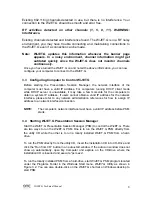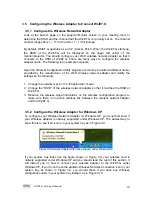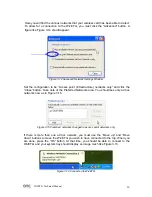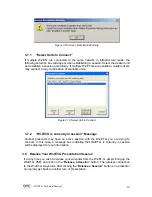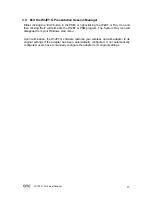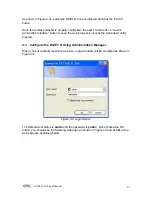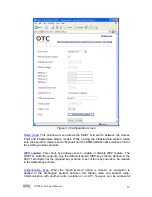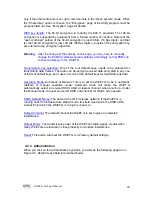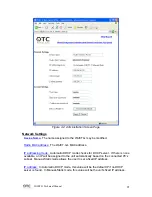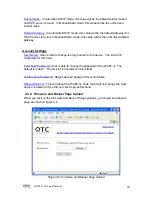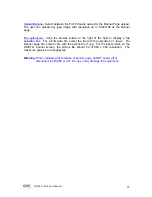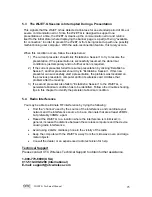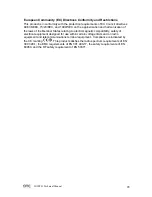
WiJET.G Technical Manual
20
only if the other radio also is set up to communicate in the “Open system” mode. When
the “Shared key” option is chosen, the “Encryption” page of the Utility program must be
properly filled out. See “Encryption” page for details.
WEP key length:
The 64-bit encryption is currently the 802.11 standard. The 128-bit
encryption is supported by equipment from a limited number of vendors. Note that the
“user-controlled” portion of the 64-bit encryption is just 40 bits (10 Hex digits) and that
for the 128-bit encryption is just 104 bits (26 Hex digits)—3-bytes of the encryption key
are internal to the encryption algorithm.
Warning:
After the change of the settings on this page, you may have to manually
change the PCMCIA adapter security settings accordingly so that PSM can
connect wirelessly to the WiJET.G.
Transmission key selection:
One of the four default keys needs to be selected for
transmitting data frames. The radio can de-encrypt received data encrypted in any one
of the four default keys, but it uses only one of the default keys for transmitting its data.
Operation Mode:
Automatic or Manual. This is to set the WiJET.G to be in automatic
(default) or manual operation mode. Automatic mode will make the WiJET.G
automatically select an unused SSID AND a clearest channel when boots up. Under
the Manual mode, the user can select SSID and channel for WiJET.G to operate.
SSID/ Network Name:
The name of the Wi-Fi wireless network. If the WiJET.G is
running under the infrastructure station mode, this field must match the SSID of the
Access Point which the WiJET.G is trying to connect to.
Default Channel:
The default channel the WiJET.G is set to given no detected
interference.
Output Power:
The transmission power of the WiJET.G’s radio signal. Useful when
many WiJET.Gs are located in close proximity to minimize interference.
Reset:
This button will reset the WiJET.G to its factory default settings.
4.3.3 Administration
When you click on the Administration hyperlink, you will see the following page as on
Figure 4.5. Detail of each field is described below.



